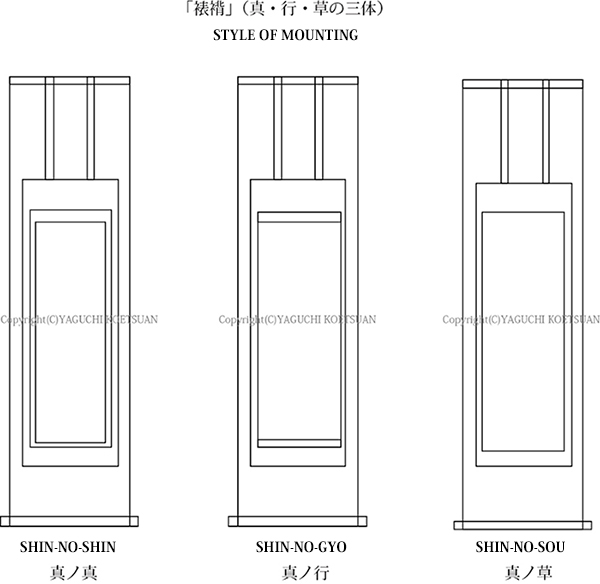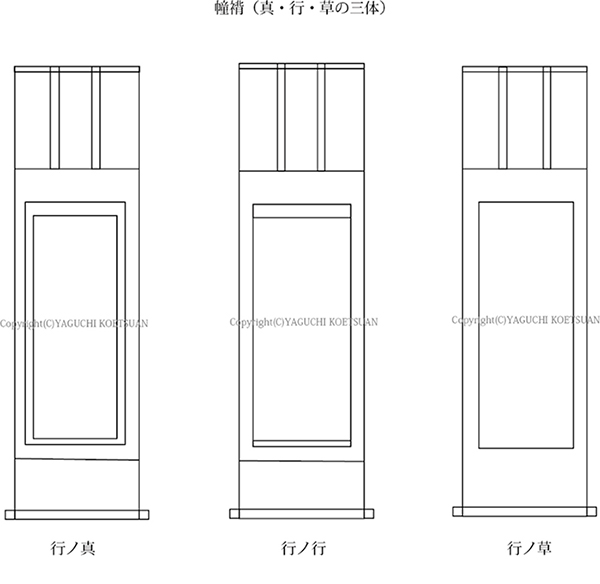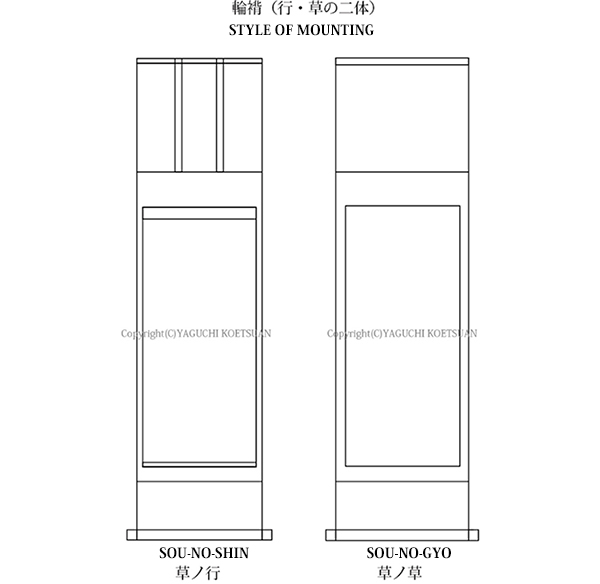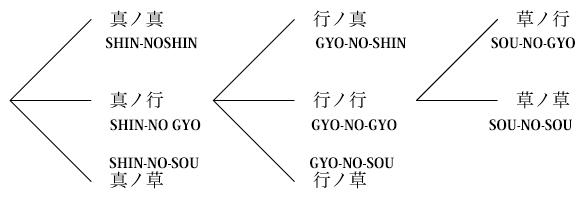表具Hyogu (scroll mount) has a long history and it is deep connected with Buddhism. It is said Japanese style Hyogu originated from imitation of sutras and Buddhism paintings from Sui Dynasty (581-618) and Tang Dynasty (618-907). At that time, Kyoji (経師), an experts of sutra scroll maker played an important role.
The job title Hyogushi (表具師) , scroll mounter, first appeared in some documents after Momoyama period (Later 16th Century) . It indicates the culture of scroll mount was spread to general people to set off paintings or drawings by mounting. The major turning point of Hyogu was during the era when Rikyu, a master of tea ceremony played an active role (Later 16th Century). The concept of Chagake, a hanging scroll at a tea ceremony, was born this period. Chagake, in the first place, should have wabi (taste for the simple and quiet) sabi (subdued refinement) style. Secondary, it should have sense of seasons. Thirdly, it should have elements of Zen spirit. Lastly, its origin and history should be clear. Hanging scroll has a long history. To make hanging scrolls of paintings or drawings on papers or silks mean understand true natures of them. For example, there are hanging scrolls called “gobutsu (imperial properties)”. They are made by using famed fabrics, expensive roller knobs with descriptions or notes of authenticity on boxes, stored with great care up to the present time.




